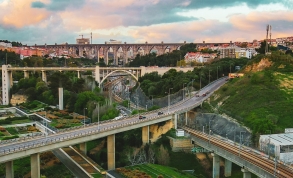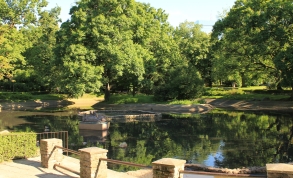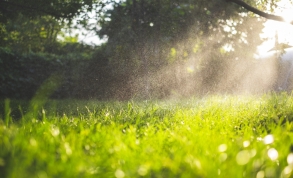Abstract
Urban greenery provides multiple ecosystem services including improved air quality, atmospheric greenhouse gases (GHG) reduction and reduced storm water runoff, bringing many benefits to human health. Urban greenery is however characterised by fragile ecosystems; their contributions to human health and well-being can be suddenly jeopardised for example by the threat posed by invasive species. The ecosystem services of 173 million urban trees in California were assessed and substantial benefits to the environment and human health risk were reported. Urban greenery also led to an increase in property prices which was considered beneficial but may unintentionally push out low income earners out of the greener neighbourhoods (gentrification).
Intervention overview
Urban areas in the United States (US) are facing numerous environmental pressures such as poor air and water quality and biodiversity loss (Duh et al., 2008). The impacts of climate change multiply these pressures (Petek, 2022), which can impact human health. The WHO estimates that air pollution from fossil fuels was responsible for 193,000 deaths in the US in 2015 (Lelieveld et al., 2019). Healthy urban forests, such as those in California, have been identified as an effective way of mitigating these impacts.
In 2010, urban areas constituted only 5% of the state of California's land base (21,280 m2), but were home to 35.2 million people, 95% of the population. These areas were estimated to contain 173.2 million trees, with their canopy covering 15% of the total urban area, which is the lowest among all US states.
This study uses a combination of field inventory (to describe forest structure) and theoretical assumptions to quantify the effect of urban trees on: GHG emissions (carbon storage and CO2 removal), air quality, flood management and energy savings from reduced heat exposure. The monetary value and susceptibility to invasive pests of the urban tree stand was also assessed.
Outcomes
The urban trees stored 103 MMT (million metric tonnes) CO2 in total per year, removing 8.5 MMT CO2 from the atmosphere annually. This yearly removal is from 7.2 MMT CO2 sequestered and 1.3 MMT CO2 emissions avoided from building energy savings.
The trees provided a net air pollution reduction of 3,537 t/year (tonnes per year). The air pollutant with the greatest reduction was ozone, with 11,293 t/year, followed by PM10, with a total of 7,030 t/year reduced. 6,481 t/year and 2,331 t/year of NO2 and SO2, respectively, were avoided and removed. Biogenic volatile organic compounds (BVOCs) and volatile organic compounds (VOCs) are ozone precursors, and the amount of BVOCs emitted by trees surpassed the amount of VOCs avoided from energy savings, resulting in a net increase of 23,599 t/year.
Trees can reduce energy required for heating by reducing wind speeds and air infiltration. Annual energy savings from natural gas heating were 2.18 million Gigajoule (GJ) due to urban trees in California, and savings were particularly high in coastal areas due to sea breezes. Shade provided by tree canopies and evapotranspiration cooling (when trees transpire, they release water, which evaporates, cooling the air) reduced air conditioning requirements. Annual electricity and savings from air conditioning reduction were 3,851 Gigawatt hours (GWh), and savings were greatest inland due to hot and dry summers. These heating and cooling savings are estimated to reduce energy spending by US$568.6 million.
Urban trees intercepted 196 million m3 of rainfall per year, resulting in annual stormwater management reduction costs of US$324.6 million. The trees further added US$7.2 billion to the value of homes, although as discussed elsewhere this could exacerbate existing inequalities. In total, annual eco-services were estimated at US$8.29 billion. It was estimated that 32.8% of the trees in Southern California were susceptible to a particular invasive pest (the ISHB-FD complex), the impacts of which would require roughly 10 years to correct. Assuming half the susceptible trees were lost, it could cost US$15.9 billion for their removal and replacement, as well as US$0.6 billion in lost eco-services annually, whilst if the 80% of trees were lost it could cost US$25.4 billion for removal and replacement, and US$1 billion in lost eco-services.
Feasibility and potential impact of scale up
The study noted that, while the benefits from 173.2 million urban trees are substantial, there is potential to plant more trees in California, California has the lowest urban tree cover of 90.8m2/capita among US states.
Climate change is increasing the risk of fires and other hazards, while population growth in California is causing a rise in invasive pests and water and energy demand issues, presenting multiple challenges. Therefore a transition to more stable and resilient urban trees is required. McPherson et al. (2017) note that pests such as ISHB-FD complex will attack multiple types of tree, so having a maximum of 10% of species from one genus (5% if it has a large spread of species across the Western Hemisphere) is recommended. Ongoing evaluation of species that are climate-ready (i.e. tolerant to stressors such as heat, drought, extreme winds and pests) and well-adapted to city conditions will also be necessary. It is important to note that different regions have different climatic conditions, trees, pests, air pollution levels, and therefore different needs, so, while the conclusions of resilient trees which maximise air pollution reduction are relevant to other regions, the optimal tree choices will differ.
The value added to homes may not be beneficial for all people. If trees are unevenly distributed through the community they may exacerbate inequalities: more trees in certain areas can reflect green gentrification and increased property prices may make land inaccessible to those of lower socio-economic status meaning they don't reap the social and health benefits of the green spaces and risk displacement (Jelks et al., 2021). It is therefore important that all members of the community are considered in the scale-up of any intervention, so that everyone can benefit equally, and those of lower socio-economic status are not further marginalised. Rigolon et al. (2020) found that early and meaningful engagement with marginalised residents of communities is critical in giving those individuals a voice in the design and a sense of ownership of the green spaces. A community outreach intervention piloted by the California Department of Parks and Recreation in a new Los Angeles park employed the promotores model, which uses community members as outreach ambassadors, and was found to aid community involvement in park programming and enhanced park use by previously underrepresented groups (Loukaitou-Sideris and Mukhija, 2020).
References
Academic profile / relevant organisation’s page
- McPherson, E. G., Xiao, Q., van Doorn, N. S., de Goede, J., Bjorkman, J., Hollander, A., Boynton, R. M., Quinn, J. F., & Thorne, J. H. (2017). The structure, function and value of urban forests in California communities. Urban Forestry & Urban Greening, 28, 43–53. https://doi.org/10.1016/j.ufug.2017.09.013
Supplementary information
- Lelieveld, J., Klingmüller, K., Pozzer, A., Burnett, R. T., Haines, A., & Ramanathan, V. (2019). Effects of fossil fuel and total anthropogenic emission removal on public health and climate. Proceedings of the National Academy of Sciences, 116(15), 7192–7197. https://doi.org/10.1073/pnas.1819989116
- Petek, G. (2022). Climate Change Impacts Across California (Crosscutting Issues, p. 24). Legislative Analyst’s Office. http://www.lao.ca.gov/
- Jelks, N. O., Jennings, V., & Rigolon, A. (2021). Green Gentrification and Health: A Scoping Review. International Journal of Environmental Research and Public Health, 18(3). https://doi.org/10.3390/ijerph18030907
- Duh, J.-D., Shandas, V., Chang, H., & George, L. A. (2008). Rates of urbanisation and the resiliency of air and water quality. Science of The Total Environment, 400(1), 238–256. https://doi.org/10.1016/j.scitotenv.2008.05.002
- Rigolon, A., Keith, S. J., Harris, B., Mullenbach, L. E., Larson, L. R., & Rushing, J. (2020). More than "Just Green Enough": Helping Park Professionals Achieve Equitable Greening and Limit Environmental Gentrification. Journal of Park & Recreation Administration, 38(3).
- Loukaitou-Sideris, A., & Mukhija, V. (2020). Promotores for parks? The potential of a public health model to improve outreach and community engagement in park planning. Leisure Sciences, 1-23.



